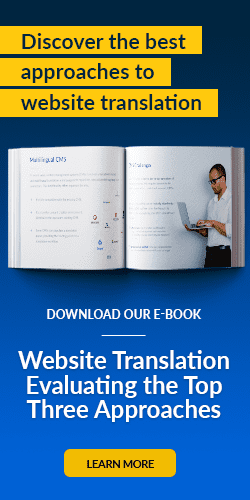The results of Britain’s Brexit referendum are wreaking havoc on business in the UK and abroad. Prominent pro-Brexit leaders have ditched the cause. Many Leave voters are pining for a do-over. On Monday, the pound sterling started partying like it’s 1985—which was the last time the currency was worth this little. This week, U.S. and Japanese government bonds yields hit record lows, too.
UK leadership is also a hot mess. Prime Minister David Cameron won’t be PM for much longer, but the candidates vying to replace him have vowed to carry out the people’s will. (Parliament won’t intervene.) Some PM candidates want to have pre-Brexit chats with EU officials about the future, but EU leaders aren’t playing ball. No talks, they say, until Article 50 is triggered—essentially, when divorce papers are formally filed.
As the shockwaves continue to rock the global economy, a question emerges: Is there any good news for UK-based businesses right now?
For at least one sector, the answer is yes. Like many analysts, we’ve been examining the challenges a post-Brexit UK will face. But we’ve also been keen to spot positive opportunities. We see bright days ahead for UK-based manufacturers.
Showing Appreciation for Depreciation
Indeed, we believe UK manufacturers can win big in the short term—especially if they embrace selling and marketing their wares through online channels. This short-term success also hinges on two key factors: exchange rates and more exports.
The Brexit’s most immediate impact has obviously been on the value of the pound. It’s widely accepted that the currency’s will continue to depreciate. While some analysts fear the pound will sink to parity with the Dollar by year’s end—an all-time low—most hypothesize the value will hover between 1.15 and 1.20 USD per GBP.
Our in-house Global Growth specialists also believe the pound’s value will fluctuate for months, but will finally stabilize at around 1.4 USD per GBP sometime next year.
A year on this roller coaster isn’t good for all businesses, but it poses compelling opportunities for UK manufacturers. Thanks to the current exchange rate (which will continue in the short term), manufacturers can win, when selling in overseas markets. In this scenario, UK exports sell for comparatively cheaper prices in global markets, which often proves to be catnip for cross-border buyers.
Cheaper exports means European customers will get more bang for their Euro, which means UK manufacturers will see higher conversions, reported sales and revenue. In fact, savvy UK manufacturers may see more sales in the near future than in months past.
This may spark a virtuous domino effect: UK production will likely increase, thanks to higher demand and local competition. And manufacturers sourcing components built in the UK stand to further maximize profits, since those materials will cost less than imported ones.
But remember, the key to supercharging these sales hinges on UK companies expanding their reach into continental markets. And since success is linked to the depreciated value of the pound, time is now of the essence.
We’re a globalization solutions company that’s helped hundreds of brands expand into dozens of international markets. In our experience, the fastest and safest way companies can do this is through online channels. Serving cross-border customers with websites in those markets’ languages of choice can really move the needle—particularly for manufacturers.
These days, launching translated sites can be done quite quickly. The best website localization solutions (like MotionPoint’s) deploy fully-operational translated sites in about a month. Initial and ongoing costs are affordable, too.
With that kind of deployment speed, UK manufacturers can remain ahead of the exchange rate, and maximize short-term sales in the EU and beyond.
Launching translated sites to serve new customers is certainly less risky (and far less costly) than entering new markets with brick-and-mortar sales locations exclusively.
Some Advice on European Expansion
Sentiment on the European continent may have warmed since the June 23 referendum, but European reactions to the Brexit results were downright chilly, and more than a little hostile. (Who can blame them? Nobody likes being dumped.)
This may impact how some continental consumers perceive UK businesses. Grudge-holding buyers may be less likely to transact on UK-owned sites—even if they are published in the buyers’ locally-preferred language.
There’s a clever way to sidestep this potential obstacle, however. Through technologies such as geo-location and others, global websites can present localized content to site visitors. This means a translated website dynamically serves content designed to resonate with consumers in specific markets—or in regions within those markets.
We’ve used such localization to present relevant promotions to global consumers, improve global-site Conversion Rate Optimization, and present regionally-preferred translations that really click with shoppers.
But in the instance of UK manufacturers, it could also be used to intelligently minimize a site’s “Britishness” within particular markets, and talk up noteworthy, differentiated offerings instead. Such trust-building content really makes a difference.
We’ve helped our clients achieve great success with these campaigns. In fact, we helped a UK-based retailer score some much-needed trust among skeptical Americans.
When this popular UK brand expanded its e-commerce efforts in the U.S. market, it quickly faced a challenge: American shoppers weren’t transacting as robustly as expected. Why? The consumers hadn’t heard of the retailer, and weren’t convinced products could be affordably (or quickly) shipped from the UK to the U.S.
To address this, we published localized banners on the retailer’s U.S. site that talked up the retailer’s great return and shipping policies. This trust campaign worked. A week later, checkout rates grew by about 30%. This contributed to an incremental revenue gain of about £2,000,000.
In our experience, companies that use such market-friendly content localizations achieve an average 50% increase in conversion rates.
The financial world will continue to feel the repercussions of the Brexit referendum for years to come. But for UK manufacturers—at least in the short term—now is a great time to shine, and sell more to continental consumers with localized websites.
Last updated on July 08, 2016
